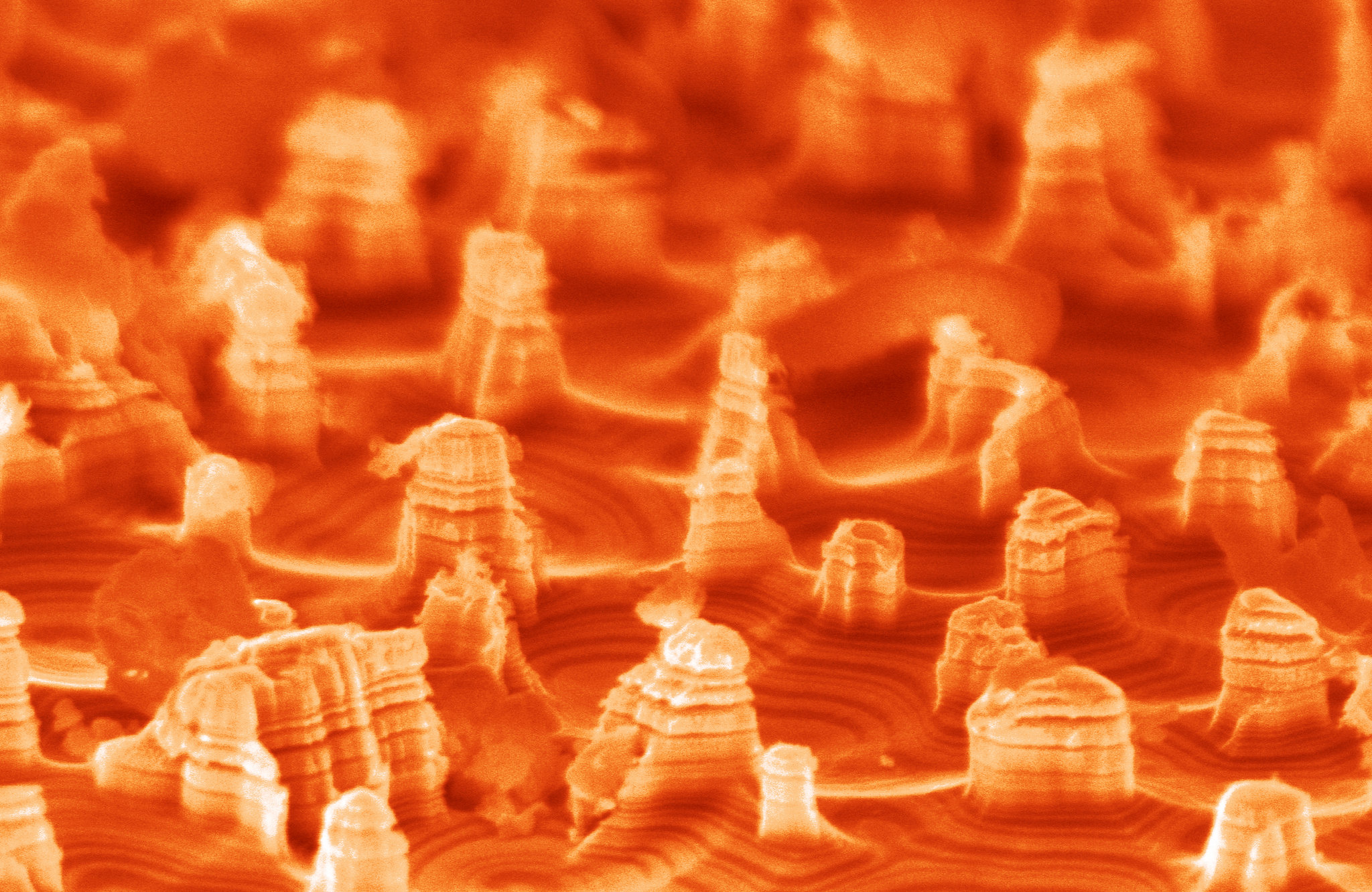Modeling Electron Microscopy

Scientists use specialized tools to study materials at the nanoscale. The scanning probe microscope (SPM) is one tool that allows scientists at Brookhaven Lab’s Center for Functional Nanomaterials to “see” materials at the nanoscale. Students will simulate a SPM to gather data and map the surface topography to identify a mystery material.
Vocabulary: atomic force microscope, hypothesis, infer, legend, magnetic field, macroscale, measurement, microscope, nanometer, nanoscale, scanning probe microscope, topographic map
| Session Information |
|---|
|
To request field trip dates, visit https://oepreg.bnl.gov/.
To explore programs listed in the ESBOCES Exploratory Enrichment catalog and to submit a BOCES contract request, please visit BOCES EE – Brookhaven Lab
NYS Learning Standards
New York State Science Learning Standards
| Disciplinary Core Ideas | Crosscutting Concepts | Science and Engineering Practices |
|---|---|---|
|
PS1.A: Structure and Properties of Matter |
Scale, Proportion, and Quantity |
Developing and Using Models Planning and Carrying Out Investigations Analyzing and Interpreting Data |
Next Generation Mathematics Learning Standards
| Number and Operations in Base Ten Measurement and Data |
Next Generation English Language Arts Learning Standards
| Speaking and Listening | Language |
|---|---|
|
Comprehension and Collaboration |
Vocabulary Acquisition and Use |
Intermediate Science Core
|
Process Skills |
Major Understandings |
|---|---|
|
Standard 4, 2 Safely and accurately use the following measurement tools: metric ruler. Standard 4, 3 Use appropriate units for measured or calculated values. Physical Setting Skills, 7 Generate and interpret field maps including topographic and weather maps. Standard 1, M3.1a Use appropriate scientific tools to solve problems about the natural world. Standard 1, S2.1b Conduct an experiment design by others. Standard 1, S2.1d Use appropriate tools and conventional techniques to solve problems about the natural world, including: measuring. Standard 1, S3.1a Organize results, using appropriate graphs, diagrams, data tables, and other models to show relationships. Standard 1, S3.1b Generate and use scales, create legends, and appropriately label axes. Standard 1, S3.2c Evaluate the original hypothesis in light of the data. Standard 6, 2.2 Use models to study processes that cannot be studied directly (e.g., when the real process is too slow, too fast, or too dangerous for direct observation). |
3.3a All matter is made up of atoms. Atoms are far too small to see with a light microscope. 4.4g Without direct contact, a magnet attracts certain materials and either attracts or repels other magnets. The attractive force of a magnet is greatest at its poles. |





